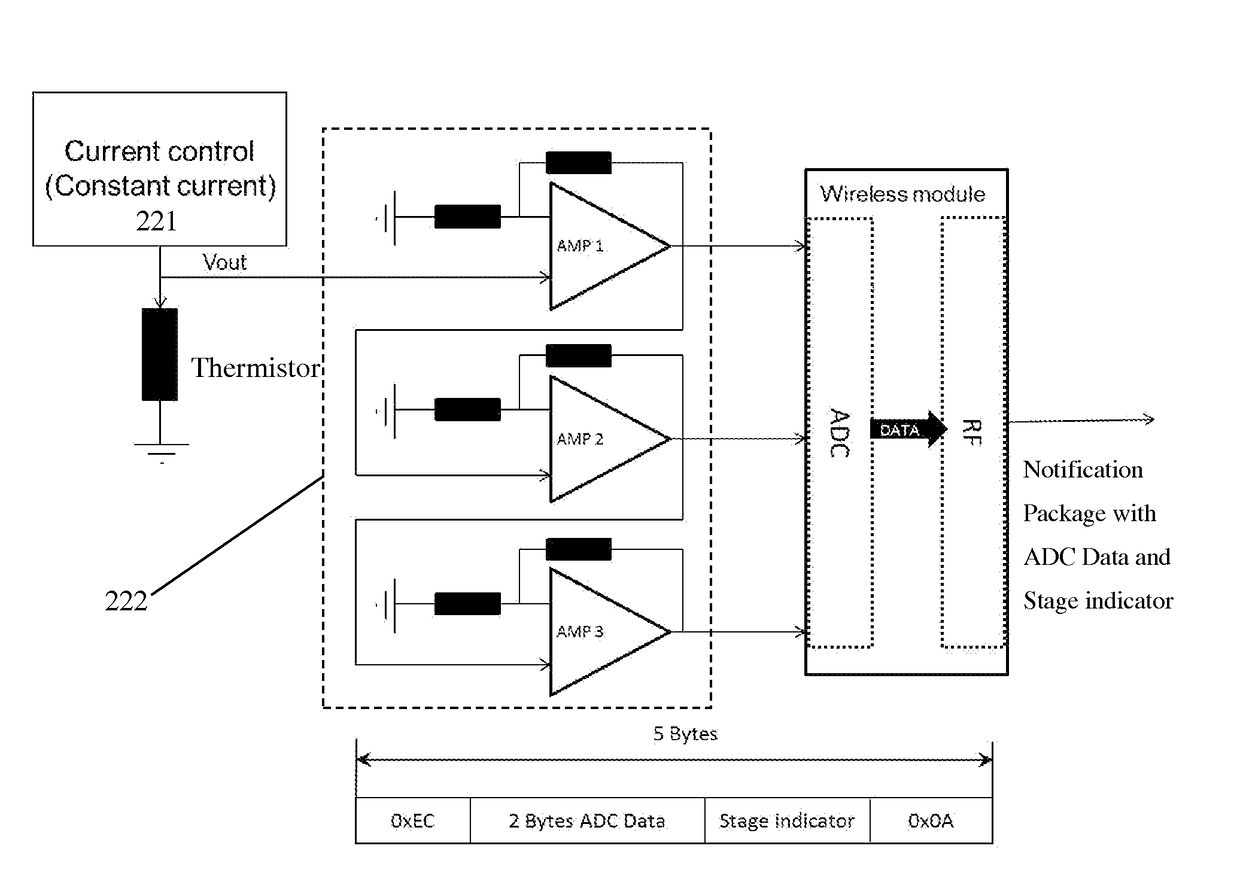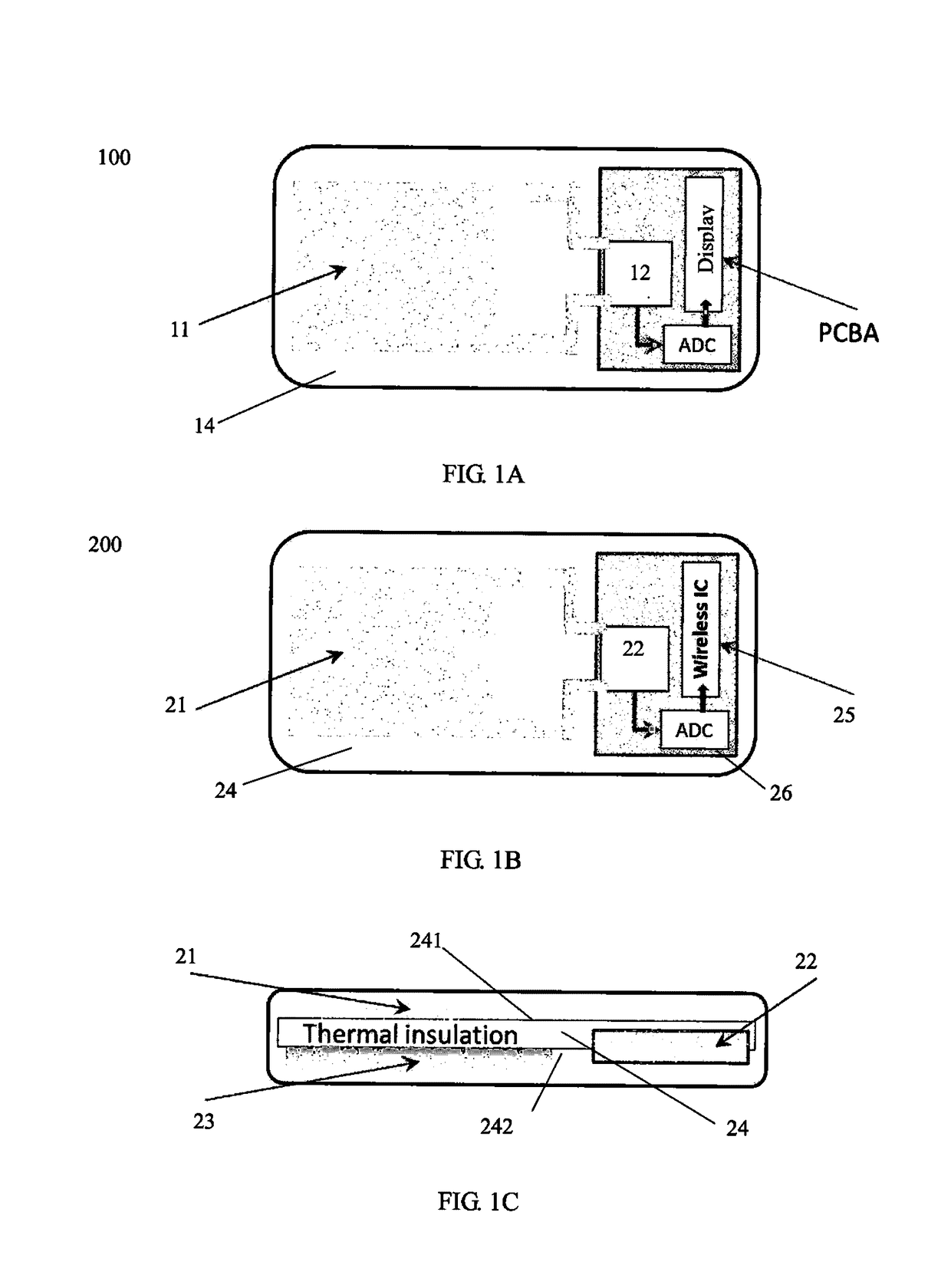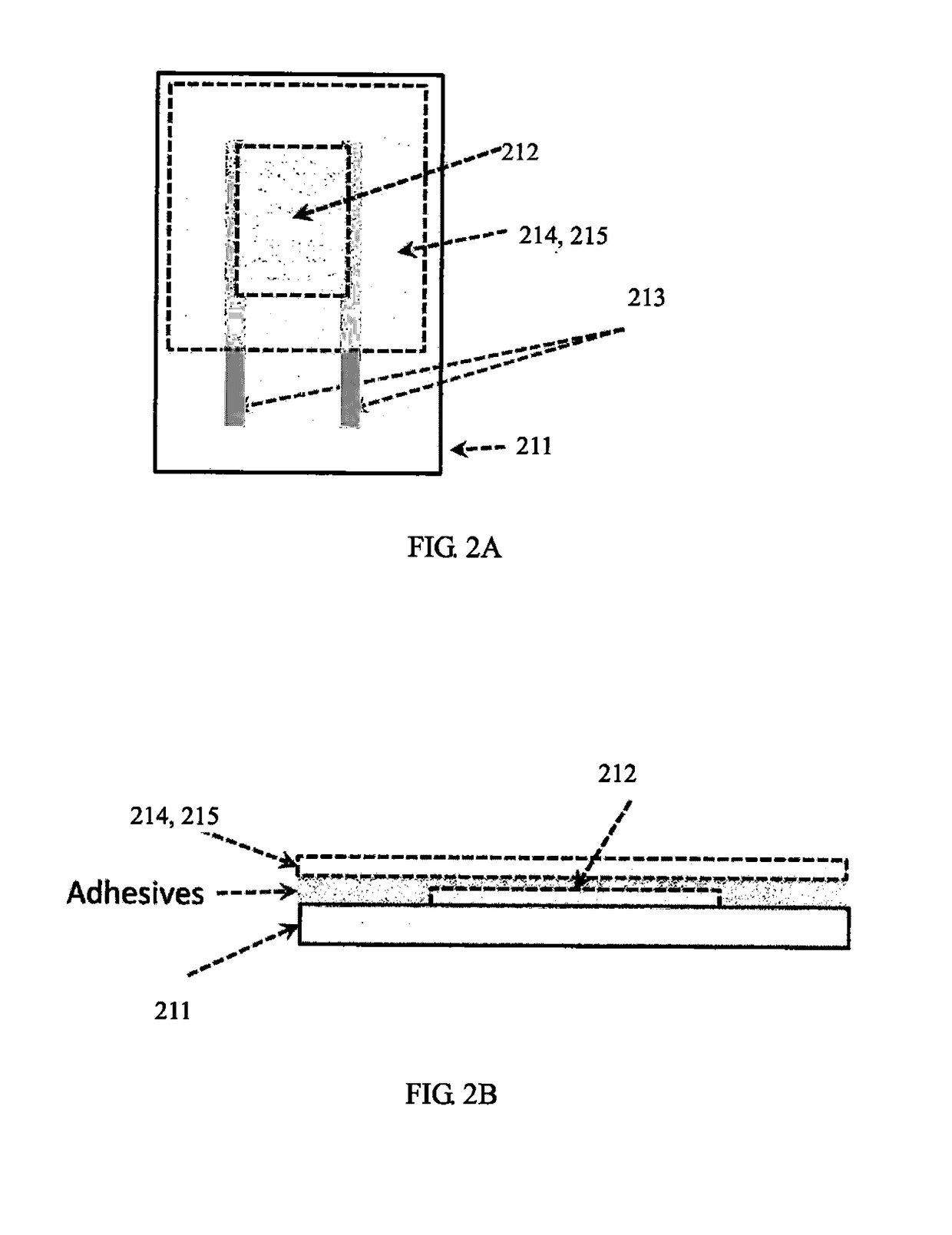Temperature sensor for tracking body temperature based on printable nanomaterial thermistor
a nanomaterial and temperature sensor technology, applied in the field of thermometers, can solve the problems of insufficient temperature sensing accuracy of electronic sensors, inability to track body temperature, and long time-consuming thermometers, etc., and achieve the effect of fast and accurate tracking of body temperature and excellent thermal insulation
- Summary
- Abstract
- Description
- Claims
- Application Information
AI Technical Summary
Benefits of technology
Problems solved by technology
Method used
Image
Examples
example 1
[0055]A fully printable NTC thermistor was produced on an 80 μm-thick PET substrate according to the design in FIG. 3. Two electrodes with a distance of about 1 mm were printed using DuPont 5064H silver conductor material and subsequently cured under ambient conditions. Afterwards, printing paste containing Si NPs and graphite flakes was printed with an area of 15 mm*20 mm, and a continuous film was made to cover above two Ag electrodes (as shown in FIG. 3). The Si—C composites were formed by mixing Si NPs and graphite flakes. The silicon nanoparticles were non-doped silicon nanopowders from MTI Corporation, which had a particle size of about 80 nm and single crystal nanostructures produced by plasma synthesis. The graphite flakes were polar Graphene platelets from Angstron Materials Inc, with thickness of about 10-20 nm and lateral size <14 μm. About 10% graphite flakes were mixed in the Si—C composites. The details of formulas for the Si—C paste were shown as below formula 1. Even...
example 2
[0065]In a second example, another fully printable NTC thermistor was produced according to the design in FIG. 3. Two interdigitated silver electrodes were deposited on a 50 μm-thick LCP substrate by screen printing using DuPont 5064H silver conductor. Ten pairs of fingers were prepared for the Ag electrodes, with finger width of about 0.3 mm and adjacent separation of about 1 mm. Then, an area of 15 mm*25 mm was defined for Si—C nanocomposite paste printing. The Si—C composites were formed by mixing Si NPs and graphite flakes. The silicon nanoparticles were non-doped silicon nanopowders from MTI Corporation, which had a particle size of about 80 nm and single crystal nanostructures produced by plasma synthesis. The graphite flakes were polar Graphene platelets from Angstron Materials Inc, with thickness of about 10-20 nm and lateral size below 14 μm. About 10% graphite flakes were mixed in Si—C composites. The formula for the Si—C paste was followed as formula 1 described above. Th...
example 3
[0066]In a third example, still another fully printable NTC thermistor was also fabricated according to the design in FIG. 3. Two interdigitated silver electrodes were deposited on a 50 μm-thick LCP substrate by screen printing using DuPont 5064H silver conductor. Ten pairs of fingers were prepared for the Ag electrodes, with finger width of about 0.3 mm and adjacent separation of about 1 mm. Then, an area of 15 mm*25 mm was defined for Si—C nanocomposite paste printing. The Si—C composites were formed by mixing Si NPs and graphite flakes. The silicon nanoparticles were non-doped silicon nanopowders from MTI Corporation, which had a particle size of about 80 nm and single crystal nanostructures produced by plasma synthesis. The graphite flakes were polar Graphene platelets from Angstron Materials Inc, with thickness of about 10-20 nm and lateral size below about 14 μm. About 10% graphite flakes were mixed in Si—C composites. The formula for Si—C paste was followed as formula 1 descr...
PUM
 Login to View More
Login to View More Abstract
Description
Claims
Application Information
 Login to View More
Login to View More - R&D
- Intellectual Property
- Life Sciences
- Materials
- Tech Scout
- Unparalleled Data Quality
- Higher Quality Content
- 60% Fewer Hallucinations
Browse by: Latest US Patents, China's latest patents, Technical Efficacy Thesaurus, Application Domain, Technology Topic, Popular Technical Reports.
© 2025 PatSnap. All rights reserved.Legal|Privacy policy|Modern Slavery Act Transparency Statement|Sitemap|About US| Contact US: help@patsnap.com



